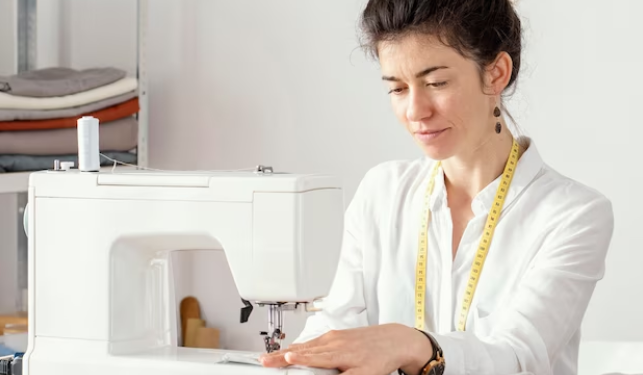New sewing machines work based on a combination of mechanical, electrical, and computerized components that work together to create stitches. In this detailed explanation, we will delve into the working of new sewing machines, highlighting the key components and processes involved.
At the heart of a sewing machine is the needle, which moves up and down rapidly. When the user activates the machine by pressing the foot pedal or a start button, the needle is driven into the fabric. As the needle moves up, a hook mechanism located inside the machine catches the upper thread from the bobbin, creating a loop. This loop is pulled through the fabric by the upward movement of the needle, resulting in a complete stitch.
Thread tension is a crucial aspect of sewing machines, as it ensures proper stitch formation. The machine typically has an adjustable tension mechanism, which controls the tightness of the stitch. By properly adjusting the tension, users can prevent the thread from becoming too loose or too tight while stitching, ensuring high-quality seams.
To move the fabric through the machine while stitching, sewing machines employ a feed mechanism. This usually consists of feed dogs, which are metal teeth located beneath the presser foot. The feed dogs grip the fabric and move it forward in a controlled manner, allowing the needle to create stitches at a consistent distance.
Adjusting the stitch length and width is another essential feature of sewing machines. This can be done through dials, buttons, or a touchscreen interface. By changing the stitch length, users can control the distance between each stitch, enabling them to achieve different effects and accommodate various fabric types. Similarly, adjusting the stitch width allows users to create zigzag stitches of different sizes or even select decorative stitch patterns.
Modern sewing machines offer a wide selection of stitches, expanding the versatility of these machines. Alongside the basic straight stitch and zigzag stitch, sewing machines may include a range of decorative stitches and buttonhole stitches. The desired stitch can usually be selected by using buttons, a dial, or a digital display that allows users to choose from a menu of options.
In addition to the fundamental components, new sewing machines often incorporate additional features to enhance convenience and efficiency. Automatic needle threading is a popular feature that eliminates the need to manually thread the needle, saving time and effort. Thread cutters built into the machine offer easy trimming of threads after completing a seam. Some machines also allow users to adjust the sewing speed to suit their preferences and skill level.
Furthermore, computerized sewing machines have become increasingly common. They utilize advanced technology to provide more precise stitching and offer an array of features. These machines may have pre-programmed settings for specific fabric types, which help optimize stitch settings automatically. Computerized sewing machines can also save custom stitch patterns, allowing users to create unique designs.
In summary, new sewing machines work by utilizing a needle and hook mechanism to create stitches. The adjustable thread tension ensures proper stitch formation, while the feed mechanism moves the fabric through the machine. Stitch length and width can be adjusted, and a variety of stitches are available. Additional features, such as automatic needle threading and computerized settings, enhance sewing efficiency. These machines combine mechanical, electrical, and computerized components to cater to various sewing needs, enabling users to create beautiful garments and projects with precision and ease.















